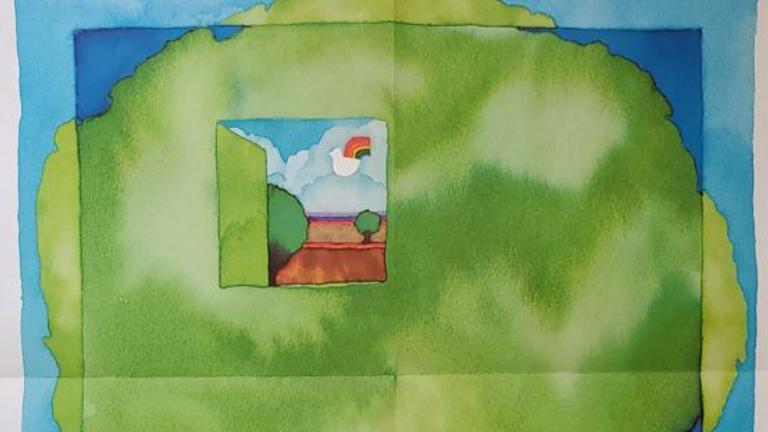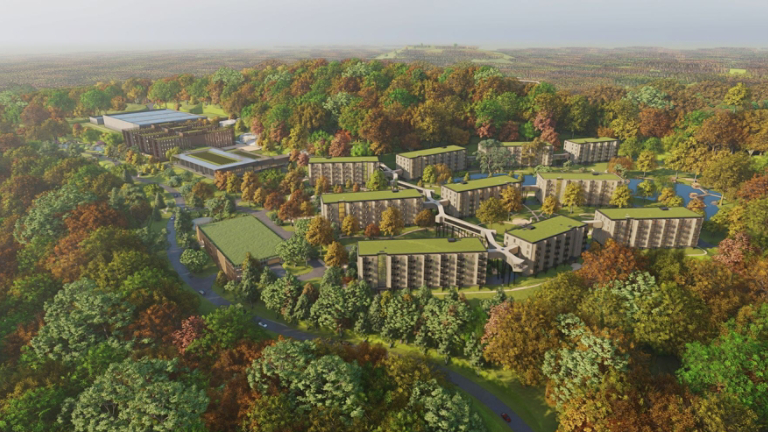Quick Facts
- Topics
- Sustainability

About the author
Amy Fitzgerald, Senior Marketing Manager
Amy is a Senior Marketing Manager with Trane, focused on the marketing strategy and campaign execution for Consulting Engineers - a key customer segment in the commercial HVAC space. Amy has been with Trane for 5 years and in previous roles managed campaign execution for various vertical markets, as well as supporting the commercial field organization as a Regional Marketing Leader for the Rocky Mountain and Southwest regions. Prior to joining Trane, Amy spent 10 years in marketing for a non-profit manufacturing consulting firm based in Illinois. She holds a Bachelor of Science Degree in Marketing from Bradley University and a Master of Science Degree in Industrial Management from Northern Illinois University. Amy currently resides in sunny Phoenix, AZ along with her husband, daughter, and miniature poodle.

Andrew Kozak remembers forking over 25 cents to buy the first Environmental Protection Agency (EPA) poster. It was a lot of money for a grade school kid in 1975, but he was committed to the cause. The poster would go on to have a place of pride among his Star Wars, Battlestar Galactica, and other ‘70s posters.
Nearly 50 years later, that sustainability ethos is still hardwired into Kozak. However, now that he is an Association of Energy Engineers Fellow, a Principle at BR+A Consulting Engineers, and a Leadership in Energy and Environmental Design (LEED) accredited professional, there’s a lot he can do to make things better.
“I’ve always been incredibly passionate and committed to our environment and our wellbeing as a community and a society,” said Kozak. “During my graduate studies at the New York Institute of Technology, I met professors who taught me about energy and how it's generated and how it's managed. I was hooked.”
Applying the Right Solutions
Sustainable technologies fall into a unique category – they can cost more initially but often save in the long run. Like all consulting engineers, Kozak and team must find creative solutions that fit their clients’ missions and budgets.
“It’s a little like golf,” he said. “Each club is used at a particular time in the game, and that's the way I approach problem solving. There's an engineering design solution for each challenge, and it’s our job to apply the most appropriate answer.”
One recent challenge was NYU’s Paulson Center, which includes student housing, faculty apartments, classrooms, performing arts theaters and supporting facilities, an athletics center and other facilities. These diverse spaces had to be integrated into one building and even at 735,000 square feet, mechanical space was limited.
Energy consumption was another issue. The building was designed with a glass exterior both to make it more welcoming to the community and to help interior wayfinding and reduce lighting needs; still, all that glass would typically mean higher HVAC loads. Kozak’s team had to find ways to save energy, despite the transparent façade.
“We couldn't have boilers on site, so the heat came through heat recovery, which collects energy that would otherwise go into the atmosphere,” said Kozak. “We also reduced the air conditioning load on the building by employing active desiccant wheels using heat. We were eager to employ this technology even though using heat to air condition which is pretty counterintuitive. The building exceeds New York City Energy Code standards by 42% and was recently certified LEED Gold.”
The Watchtower Project
As impressive as the Paulson Center’s energy savings are, they pale against the new Jehovah’s Witnesses World Headquarters Project in Ramapo, New York. Building this 1.7 million square foot complex, set on more than 240 acres, is challenging on its own, and sustainability adds an extra wrinkle.

To meet its energy needs, the complex will be powered through solar panels, heat recovery, and geothermal energy. When completed, the campus will have the largest geothermal wellfield in New York State: 280 wells total, each 800 feet deep. High performance façades will insulate the buildings to further reduce energy consumption. In addition, the BR+A team added other refinements to reduce the carbon footprint.
“I advocated with the client to use mass timber in their residential buildings,” said Kozak. “Mass timber uses wood in place of concrete, where appropriate, and that generates a vast reduction in embodied carbon.”
Except for a natural gas-powered back-up generator, the campus is entirely electrified and fossil fuel-free. Kozak looks forward to the day when the grid will supply only green electrons, fully decarbonizing the complex. To recognize these accomplishments, the New York State Energy Research Development Authority recognized the project with its Buildings of Excellence Award.
Industry and Education
These are challenging builds and Kozak and BR+A rely on Trane and other partners to push the envelope on sustainability. Kozak particularly appreciates the mutual trust he has developed with Trane’s New York office over the years.
“I can't say enough about the New York team; they look out for our team’s best interest,” said Kozak. “Trane is a world-class organization, and they share information with me about refrigerants and current trends in machine design and that helps me guide my client along the right path.”
In addition to his work at BR+A, Kozak is an adjunct professor with the largest private university in the United States, teaching a graduate course on Sustainability and Energy Management. The class has been quite popular – for the current semester, he had expected around eight students but ended up with 23.
Kozak is well-versed in the world’s changing environment, engaging in real-time industry challenges and arming the next generation with the knowledge to refine built environments.
“Young people are immersed in digital information, and they recognize the big challenges that our environment is facing,” said Kozak. “It’s my job to educate them and show them all the different facets – technical, social, information technology – that go into these things. It’s a complex problem, but the students are hungry for this type of knowledge. I am extremely optimistic that our young people will pick up where we leave off and build a brighter future for everyone.”
